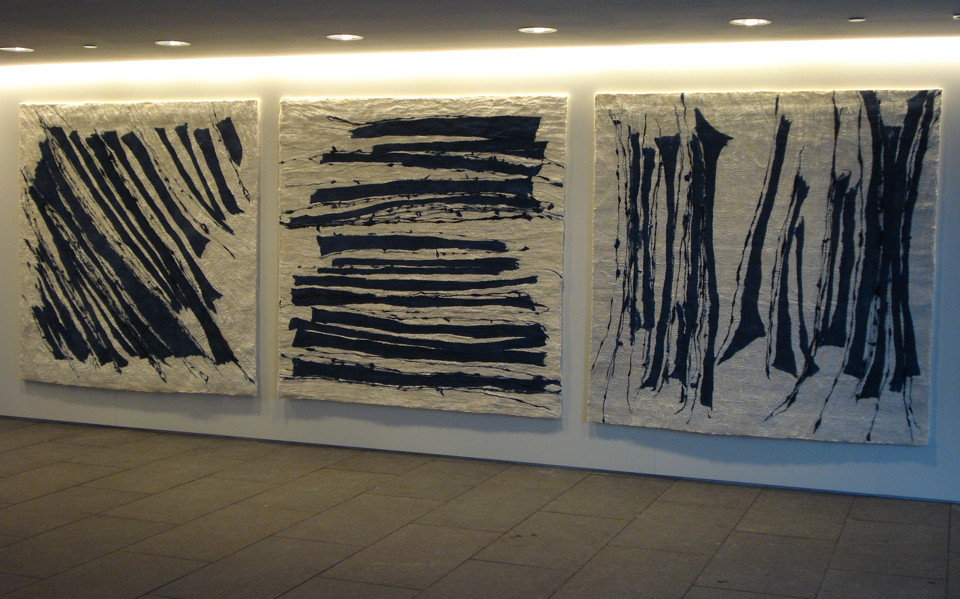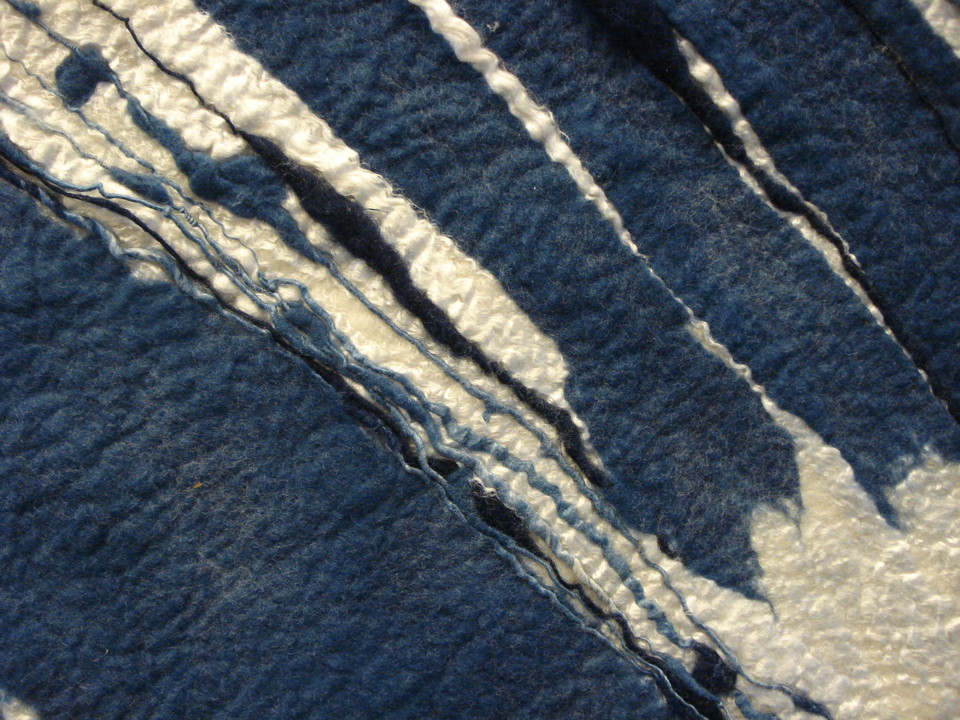HANDMADE
claudy jongstra

The work of Jongstra is created in a small village in the North-West of Friesland, Spannum, counting not even 300 inhabitants. A small church on a terp, a main street, several side streets – that is all there is. One small street could be called Claudy Jongstra street, having a house which is used as office and wool dyes-works, here living place, a wooden design studio and a shed for the production of the wall tapestries.“I have the feeling of being halfway my development as an artist”, Jongstra says. “We have arrived at a point which we have been working towards step-by-step”, Marleen Engbersen says. Jongstra and Engbersen intertwine the words connections continuously through their story. Jongstra: “My work is never an isolated thing. It connects to buildings which I design it for and intends to call up emotions in the persons in such buildings.
Next year I will work on a ballet performance together with dancers at an American university, Dartmouth in New Hampshire. With performing arts, architecture, – in all kinds of ways I look for connections.” A romantic artist lives for art and hopes to be able to live of it. Jongstra and Engbersen followed a different strategy. Their cooperation is a permanent search for a market. Who do they wish to work for? Where should the work finds its place? Engbersen: “We focus on educational institutions like schools and universities, on health care institutions, innovative companies and political buildings”.
Why? Jongstra: “I connect natural history and cultural history and this requires a permanent study. I want to learn from the persons I work with and work for. Reversely I hope that they also want to learn together with me. Then the strongest impact can be made in education, science, culture, healthcare and politics”.
No art pour l’art, no, but art with a mission. What mission? Jongstra talks about a summer class she has been given for several years on an estate in Umbria, Italy, in a Franciscan stern environment of bare rooms with a light-bulb hanging from the ceiling. With twenty persons from all over the worlds she works there: Americans, Argentinians, Japanese, musicians, physicians, psychiatrics, entrepreneurs.
“The entire week we are working with natural materials. With flowers we picked ourselves we dye wool and linen, in big pots on open fire of wood we gathered ourselves. During the week we really get to talk. People have lost a direct connection with nature and they miss social structures. They are astounded to see how culture is created from nature. They have busy lifes, great careers, but they feel a huge emptiness around them: caused by superficiality, of agitated consumption”.
So, let’s all go back to nature? Engbersen: “No! we are not a retro movement. The trick precisely is to create new things from old knowledge and craft. In architecture a fascinating school has come up, called ‘healing architecture’. Both natural and built environment have an impact on the behavior of mankind. We strive for inspiration and truthfulness in our work and get this across to people.”
Jongstra runs a company in Spannum with seven employees and about fifteen freelancers. They make felt from wool and spin the threads which Jongstra makes here art with. The material is colored with dye of the flowers grown by order of Jongstra. Bee colonies and beekeepers must ensure that the flowers are cross-fertilized.
Jongstra: “I experience the development of my work as a constant unwrapping of gifts. The past comprises an amazing amount of knowledge: botanical knowledge, craft knowledge. This opens a world for me behind the visible world. And I am convinced that this dive in the past also generates knowledge in its turn to develop sustainable production methods.”
Text by Gijsbert Van Es

Since its founding in 1932, Bennington College, Vermont, has been known as a progressive college intent on bringing an intensity and breadth to undergraduate education that comes from building deep connections between doing and knowing, thinking and acting, passion and reflection. The Center for the Advancement of Public Action – CAPA uses critical world issues to organize and generate curriculum, aiming at commitment to the essence of life and the world, challenging students to discover what it means and takes to live a good life as well as a successful one.
The new buildings designed by Tod Williams and Billie Tsien will be home for liberal arts education, while expressing its new radical approach. Claudy Jongstra made the tapestries for the entrance hall.

